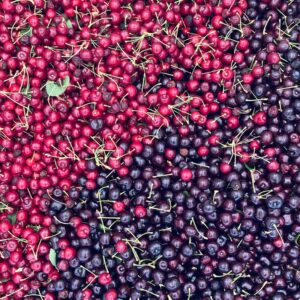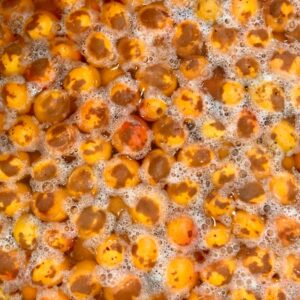Philosophy at

The motivation for C&G was born out of our desire to reduce our own farm waste. From this flows our desire to make cider with minimal intervention that is reflective of real fruit and real place.
We work very minimally—with ambient fermentations, producing unfined and unfiltered finished products. We strive to take ad little as possible out of our ciders and to add as little as possible to them.
Drawing inspiration from cidermaking and winemaking around the world, we love making bubbles! Follow the passion below to learn about all the different ways we make bubbles.
at C&G we make
Bubbles in 3 different ways!
1
2
3
Regardless of which method used, we work with CO2 produced by yeast.
Yeast eat sugar, convert it to alcohol and produce CO2 in the process.
We make both bottle and can fermented ciders.
That means that ALL carbonation in our ciders, whether in the bottle or in the can, has been produced naturally by yeast as a by-product of fermentation in the vessel from which you consume it.
How cool is that?
1
Traditional Method Sparkling
Bottle Fermentation
This method is two fermentations, a primary fermentation that takes place out of the bottle to complete dryness—the yeast ate all juice sugars and converted them to alcohol—and a secondary fermentation that is built spefically for the bottle.
To build this secondary fermentation we start a yeast culture using commercially packaged yeast and yeast nutrient. The yeast culture and exactly the amount of sugar needed to produce our desired pressure in bottle is then added to the cider prior to bottling. The ferment will then start and finish in bottle.
2
Ancestral Method Sparkling
Bottle Fermentation
This method is only one fermentation. The sugar density of the apple juice is monitored throughout its fermentation, and then, at a very particular window of density—when there’s just the right amount of sugar left for carbonation—we bottle the ferment and trap it there. The ferment will then finish in bottle—making bubbles while it does!
Our primary/singular fermentations are always ambient.
Hand riddled, hand disgorged
When you ferment to full pressure, which is to say to the maximum pressure that a liquid inside a Champagne bottle can hold, you have to take the sediment, or what we call lees—dead yeast—out. If we didn’t, our ciders would just geyser all over the place and we would ruin your kitchen. To do this, our full pressure ciders are riddled and disgorged. Riddling is turning the bottles upside down at 45o and turning them everyday to allow the sediment to fall into the cap or neck of the bottle. Disgorging is the process whereby we use the pressure contained within the cider itself to force its own sediment out.
3
Can Conditioning
Can Fermentation
In 2021 we became the first cidery in British Columbia to work with can-conditioning. We’re still one of only a handful of cideries in Canada to do this.
And we do it exclusively for all of our canned ciders!
That means that at C&G a fermentation has taken place in each and every individual can.
This works the same way as a Traditional Method Sparkling in bottle; there is a primary fermentation out of can, and a secondary fermentation in can to create the carbonation.
I'm thirsty now, please take me to the store




we work with real fruit and botanicals
Our ciders reflect our orchards and the growing year that they experience. We work with real fruit, whether that fruit is from us, our extended family—also farmers here in Naramata—other BC growers, and more recently, even family-owned farms and packing houses in Saskatchewan and California.
Different fruits are available at different times of year, and each year is different. The fruits we work with are crops! And we want our ciders to reflect that.
